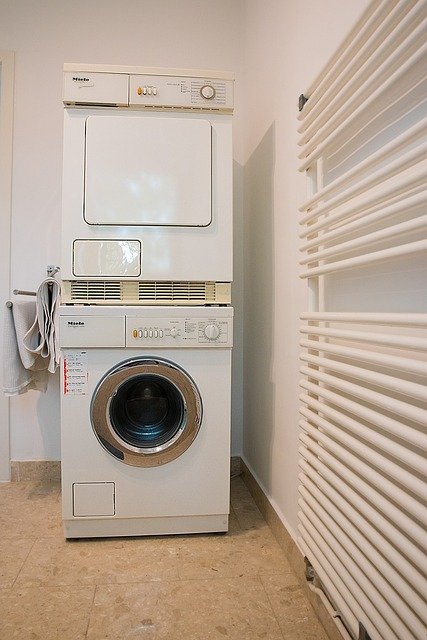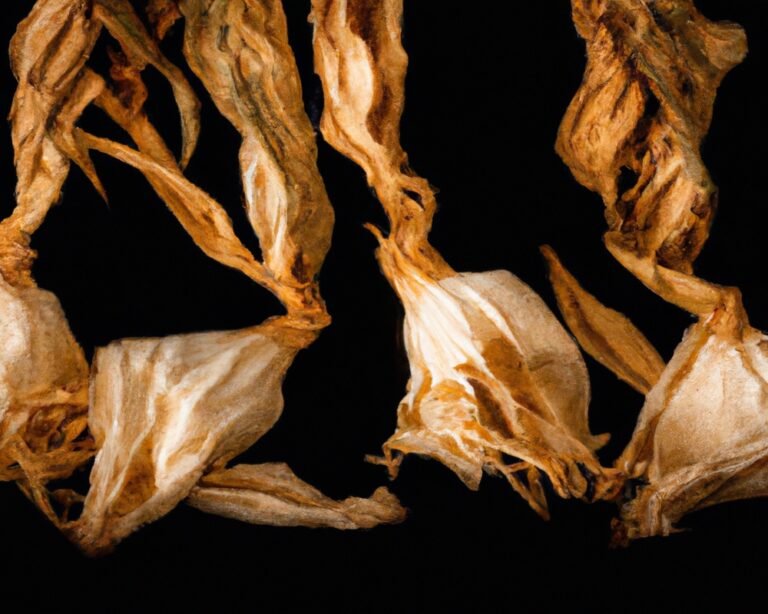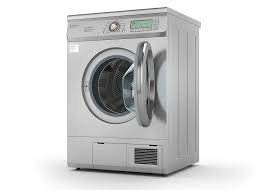Parts of a Dryer: Internal, External and Gas vs Electric
Ah, the trusty clothes dryer a modern marvel that’s often taken for granted. We stuff it with damp clothes, push a button, and presto! Freshly dried and ready-to-wear garments in no time. But have you ever wondered what goes on inside this magical box? Let’s take a peek behind the scenes and unravel the mystery of the parts of a dryer that make a clothes dryer tick.
Parts of a Dryer
When you think about it, a clothes dryer isn’t just a drum that spins your clothes around with hot air; it’s a symphony of components working in harmony. From the external components that you might notice every day, to the internal machinery that operates tirelessly, with different types of dryers every piece plays a crucial role in achieving those warm and fluffy results.
What are the External Dryer Parts?
External dryer parts refer to the components of a clothes dryer that are visible and situated on the outer surface of the appliance. These parts play a crucial role in the functionality, safety, and convenience of the dryer. They include elements that contribute to the overall user experience and help ensure efficient and effective drying cycles.
External dryer parts are designed to enhance the user’s interaction with the machine and provide necessary information and control over the drying process. These parts not only aid in the proper functioning of the dryer but also contribute to its aesthetics and overall usability.

Dryer Feet
Let’s start from the bottom, quite literally. Ever wondered why your dryer doesn’t dance around the laundry room? That’s thanks to its feet, which keep it steady and prevent it from waltzing away during the spin cycle.
Dryer Light Bulb
Just like a little flashlight for your laundry, the light bulb illuminates the inside of the dryer, making sure you don’t leave any sock behind.
Dryer Lint Filter
This unsung hero catches all the fuzz and lint that detaches from your clothes, saving your dryer from potential overheating while also saving you from dusty laundry.
Dryer Knob or Dial
The control center of your dryer, the knob or dial lets you choose the desired settings for your laundry. It’s like the DJ of the laundry world, setting the right mood for your clothes.
Dryer Door Seal
You know that rubbery lining around the door? That’s the seal, ensuring a snug closure to keep all the heat and moisture inside where they belong.
Dryer Door Latch
A simple mechanism with an important job – keeping the dryer door securely shut during the drying process.
Dryer Door Switch
This clever switch senses whether the door is closed or not, preventing the dryer from running if the door is ajar.
Dryer Baffles
You might not see them, but you’ll certainly hear them. These are the baffles, those fin-like structures inside the drum that help toss and turn your clothes for even drying.
Dryer Vent
The exhaust system of your dryer. It’s responsible for channeling out the hot, moist air generated during the drying cycle. Keeping it clear is crucial for efficient drying and preventing potential hazards.
What are the Internal Dryer Parts?
Internal dryer parts refer to the components located inside the drum and housing of a clothes dryer. These components work collectively to facilitate the drying process by generating heat, creating airflow, and ensuring proper movement of the laundry load. Internal dryer parts are responsible for the core functions of drying clothes efficiently and evenly.

Dryer Blower
This fan-like component ensures proper airflow within the dryer, aiding in even drying and preventing overheating.
Dryer Thermal Fuse
A tiny but mighty guardian of your dryer’s safety. It cuts off power if the temperature gets too high, preventing potential fires.
Dryer Sensor and Thermistor
These sensors are like the dryer’s taste buds, measuring the moisture level and temperature of your clothes to adjust drying times accordingly.
Dryer Idler Pulley Wheel
This little wheel helps keep the drive belt under tension, ensuring it stays in place during the spinning and tumbling.
Dryer Drive Belt
The powerhouse that connects the drive motor to the drum, making it spin. Without it, your dryer would just be a big, stationary box.
Dryer Drive Motor
The muscle behind the spinning action. This motor rotates the drum and keeps your laundry in motion.
Dryer Drum Slide, Glide or Pad
These are like the drum’s fancy footwear, allowing it to smoothly spin while minimizing friction.
Dryer Drum Roller
Imagine a dryer dance floor – these rollers are the partners that help the drum spin gracefully.
Dryer Circuit Board and Timer
The brains of the operation. The circuit board and timer control the various cycles and functions of the dryer.
Dryer Heating Element
The star of the show, this component generates the heat that dries your clothes. It’s like having a mini sun inside your dryer!
Gas vs. Electric Parts
But wait, there’s more! The division between gas and electric dryers also brings its own set of unique components into play.
Flame Sensor
Exclusive to gas dryers, this sensor detects the presence of a flame to ensure the burner ignites properly.
Gas Burner and Control Valve
In gas dryers, this duo ignites and regulates the flow of gas to produce the necessary heat.
Dryer Igniter
The spark that starts the fire. This igniter lights the gas burner, initiating the drying process in gas dryers.

Gas Dryer vs. Electric Dryer Parts
Now, let’s dive into a face-off: gas dryer versus electric dryer parts. They share many components, but each has its own unique players in the game.
The distinction between gas and electric dryers lies not only in their energy sources but also in the unique components that cater to their specific functionalities.
| Feature | Gas Dryers | Electric Dryers |
|---|---|---|
| Energy Source | Operate on natural gas or propane for heat generation | Run on electricity for heat production |
| Flame Sensor | Equipped with a flame sensor for proper burner ignition | Not applicable |
| Gas Burner | Utilize a gas burner to create controlled combustion | Not applicable |
| Control Valve | Regulate the flow of gas for heat generation | Not applicable |
| Igniter | Ignite the gas burner to initiate the drying process | Not applicable |
| Venting | Require proper venting to expel combustion byproducts | Generally use vents to channel out moist air |
| Initial Cost | Typically more expensive due to additional components | Generally have a lower upfront cost |
| Operating Cost | Can be more cost-effective in the long run with gas supply | May have higher operating costs depending on electricity |
| Installation | Require proper gas line connections and ventilation | Simple plug-and-play installation with electrical hookup |
| Environmental Impact | Emit combustion byproducts and greenhouse gases | Reliant on electricity sources, potentially cleaner |
| Safety Considerations | Gas leaks and combustion safety precautions must be taken | Fewer concerns related to gas safety |
What are the Parts of a Dryer Drum?

The drum, the heart of the dryer, is where all the action happens. It’s the arena where your clothes tumble and dance in the warm embrace of hot air, emerging rejuvenated and ready for action.
What is a Top Load Dryer?

A top load dryer is like the loyal workhorse of laundry appliances. Just like its washing machine counterpart, it opens at the top, allowing you to load and unload your laundry with ease.
What are Dryer Arms?
Picture this: the dryer drum is like a merry-go-round, and the dryer arms are the happy riders. These arms, also known as fins or paddles, help lift and toss your clothes, ensuring they get an equal share of the hot air and come out perfectly dried.
FAQ Parts of a Dryer
What parts are in a dryer?
A clothes dryer comprises a range of internal and external components. Internally, it includes parts like the blower, thermal fuse, sensors, drive belt, drum rollers, drive motor, and heating element. Externally, there are dryer feet, a light bulb, lint filter, control knob, door seal, door latch, door switch, baffles, and the vent system.
What part of the dryer heats up?
The heating element is responsible for generating the necessary heat within the dryer to dry clothes effectively. It’s typically situated within the drum and plays a pivotal role in the drying process.
What is on the back of a dryer?
Positioned at the rear, you’ll find the vent exhaust on a dryer. This component expels hot and moist air produced during the drying cycle, ensuring proper airflow and averting overheating.
What is the silver thing on the back of the dryer called?
The silver component at the back of the dryer is typically the vent exhaust pipe or vent duct. This essential element channels hot air and moisture out of the dryer to the external vent system.
What are the dividers in a dryer called?
The dividers within a dryer drum are known as “baffles.” These fin-like structures are affixed to the drum’s interior, aiding in the even circulation and tumbling of laundry for thorough drying.
What are the inner workings of a dryer?
The inner mechanisms of a dryer encompass all internal components that collaborate to enable the drying process. This involves the blower, sensors, heating element, drive motor, drum rollers, and more. These components synergistically generate heat, circulate air, and tumble laundry for efficient drying.
Is it worth it to fix a dryer?
The decision to repair a dryer depends on factors like repair costs, the dryer’s age, the issue’s extent, and the appliance’s overall condition. Occasionally, repairing is more cost-effective than replacement, particularly for minor problems with a dryer that has remaining lifespan. Evaluating repair expenses against a new dryer’s cost aids in making an informed choice.
What is the average lifespan of a dryer?
The average lifespan of a clothes dryer typically ranges between 10 to 15 years. However, factors like usage frequency, maintenance, and brand quality can influence how long a dryer lasts. Regular maintenance and proper care can extend its lifespan.
What are the most expensive parts of a dryer?
Some of the most expensive parts of a dryer to replace include the heating element, the motor, and the control board. These components play critical roles in the drying process and overall functionality, which can impact repair costs.
What are the symptoms of a bad dryer?
Signs of a malfunctioning dryer can include inadequate drying performance, unusual noises, overheating, clothes taking longer to dry, burning smells, or a non-responsive control panel. These symptoms often indicate issues with internal components or ventilation that may require attention or repair.
Conclusion: The Heart of Efficiency and Comfort
In the realm of household marvels, the clothes dryer stands tall as a beacon of innovation and convenience. Our exploration of its intricate components revealed a world of mechanical artistry that turns wet laundry into cozy clothes.
Every part, from the robust feet to the clever sensors, has a pivotal role in this symphony of efficiency. Both externally and internally, the dryer’s design ensures not just functionality, but also safety, whether powered by gas or electricity.
This appliance isn’t just a machine; it’s a masterful composition merging form and function flawlessly. As you start each drying cycle, take a moment to appreciate the intricate dance within the drum. From the blower’s gentle breeze to the heating element’s warmth, it’s a symphony dedicated to your comfort and convenience. So, as we conclude our exploration, let’s greet each laundry day with a newfound admiration for this engineering marvel that adds coziness and efficiency to our lives.







